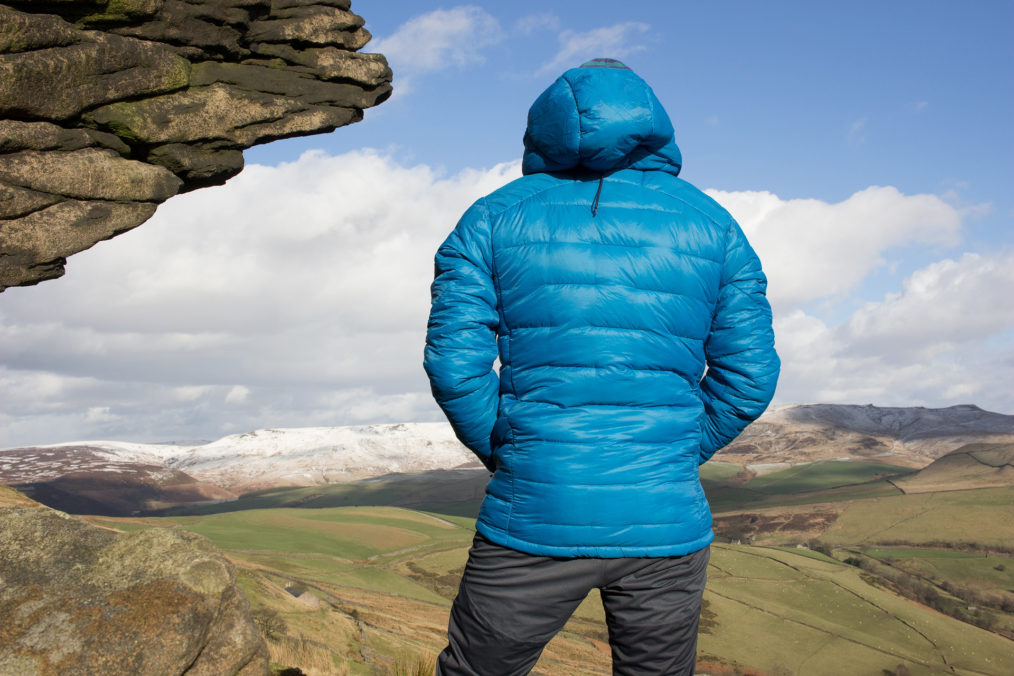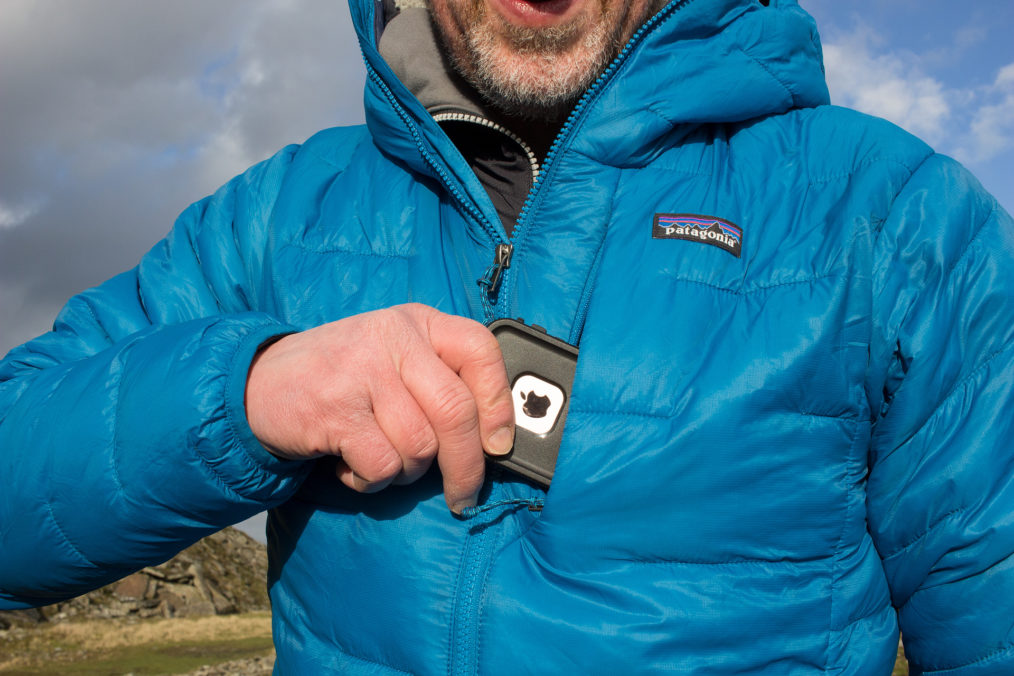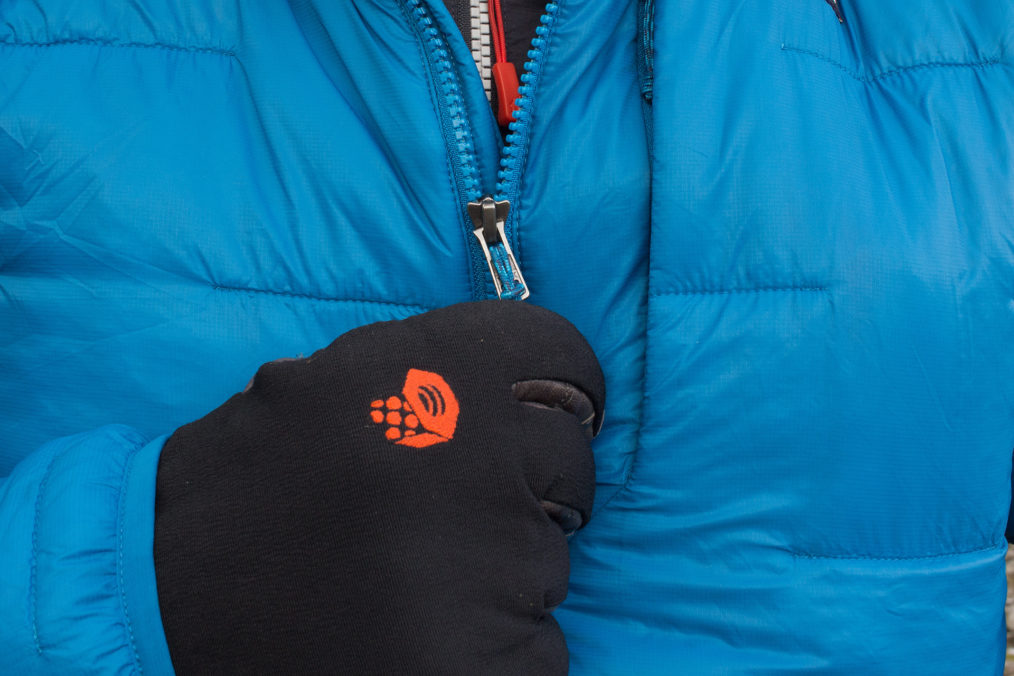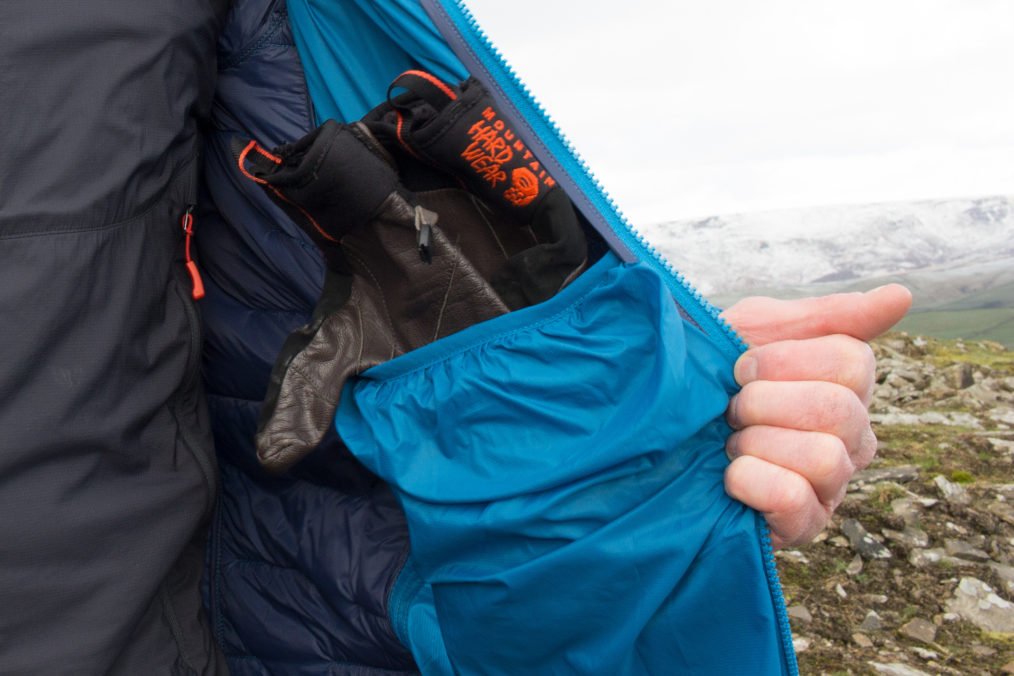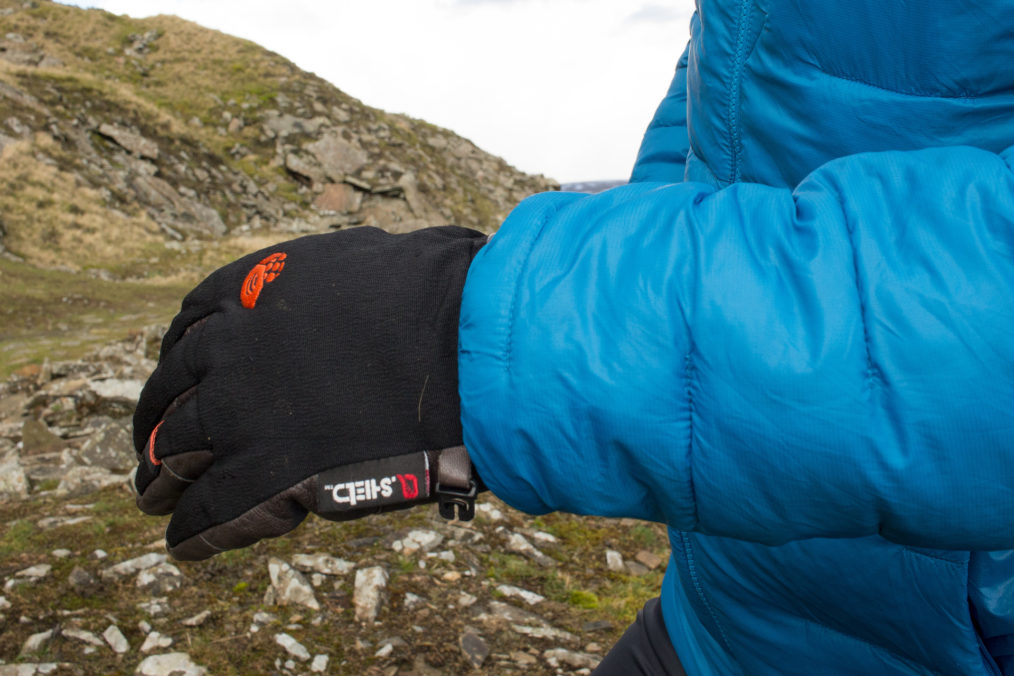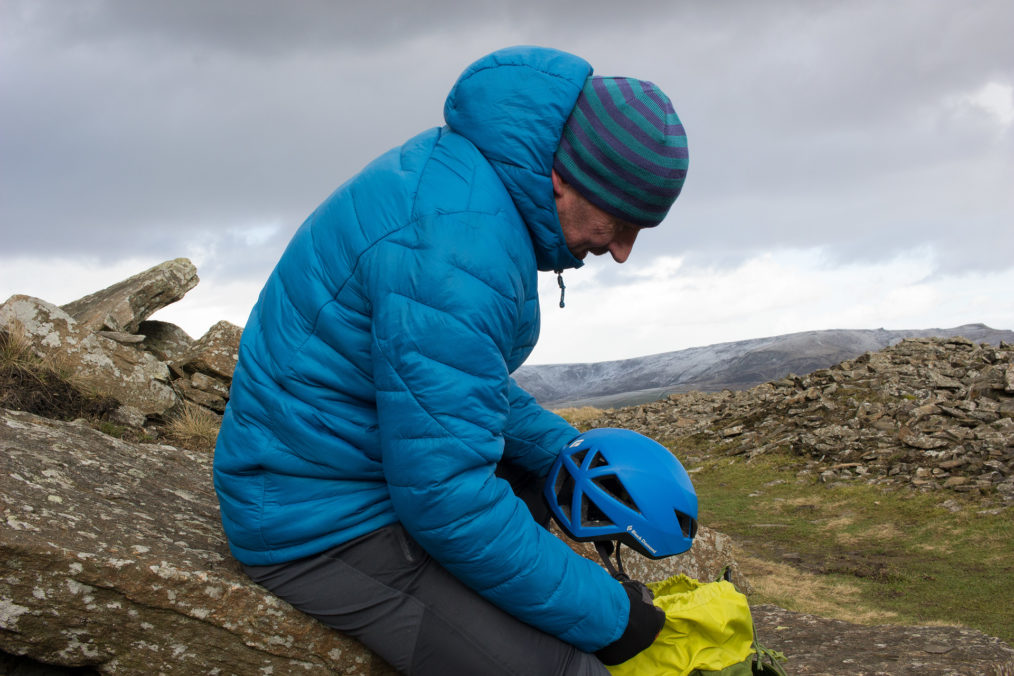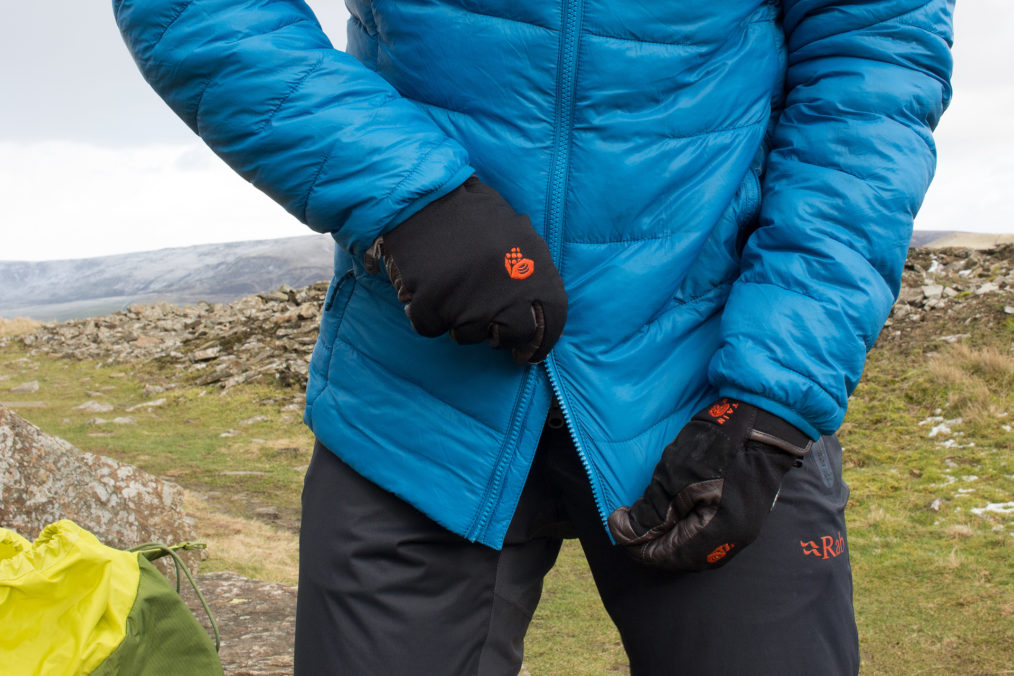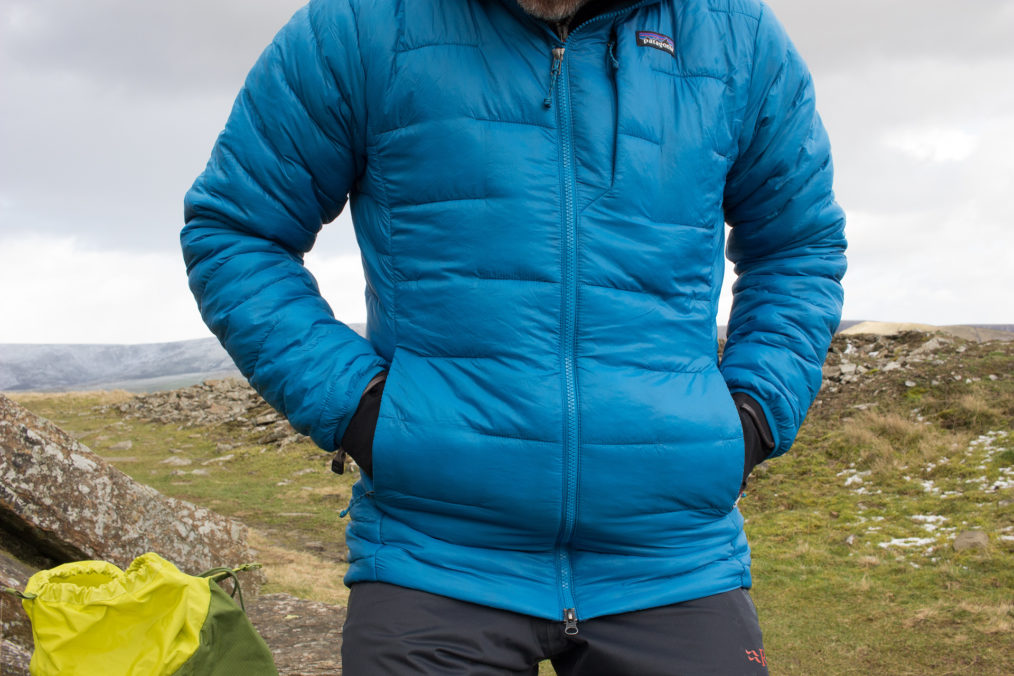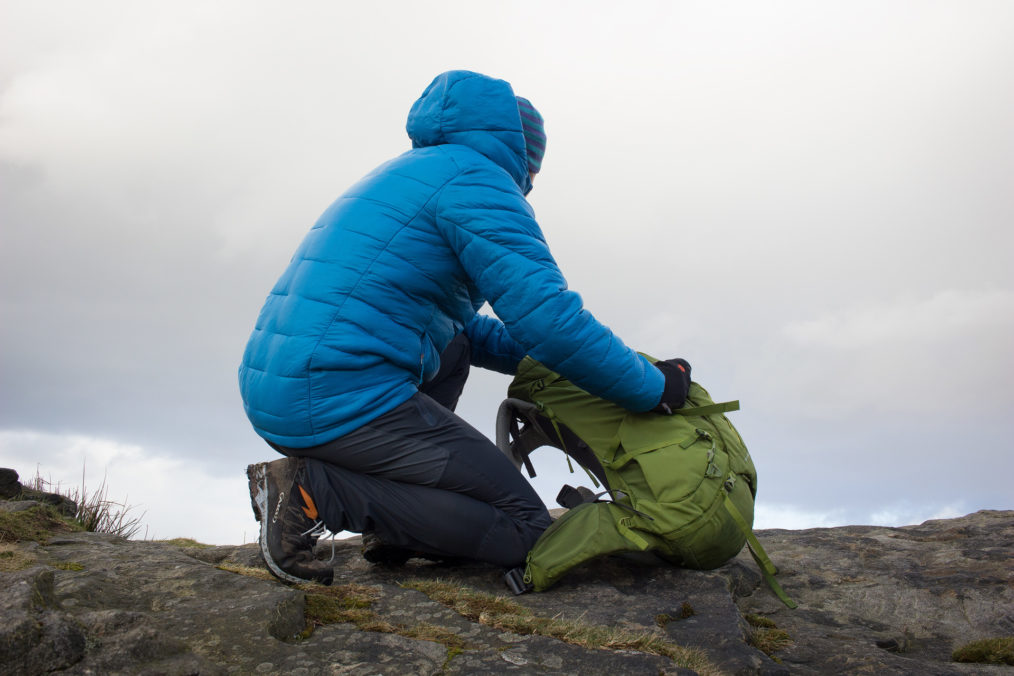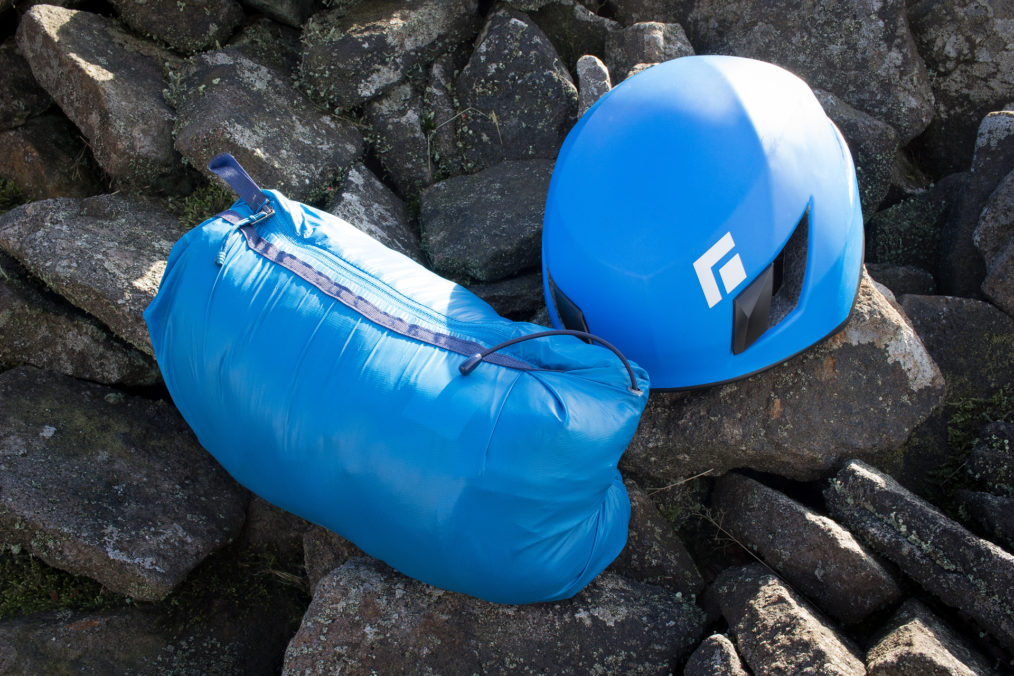Jon Duran tests a new jacket from Patagonia that combines the warmth-to-weight ratio of high-loft down, but the water-resistance of heavier synthetic filled jackets...
There’s always been a weird tension in the fluffy world of outdoor insulation. On the one hand, high-loft down has generally had the whip hand when it comes to warmth to weight value. It packs smaller, lofts bigger and keeps you warmer per gramme of weight.
All of which is great until you find yourself belaying on a gently dripping ice-fall or happen on one of those character-building Scottish winter days that starts with road-side rain, evolves through the holy stages of sleet and snow and finishes with everything you’re wearing or carrying frozen into sheets of crunchy cardboard frostiness.
Down doesn’t like that stuff. Synthetic fills, on the other hand, are much better with being wet and still working, but despite advances, they’ve always been heavier and bulkier. Until last year that is, when Patagonia introduced its synthetic PlumaFill insulation which gives a claimed warmth to weight value of close to 900 fill power down, but still works decently when damp and dries fast and easy. It first appeared in the ultra-lightweight – around 250g – Micro Puff Jacket last year. The Macro Puff, see what they did there, is its bigger, warmer brother using a zoned, fill of heavier weight insulation and targeted more at climbing belay use.
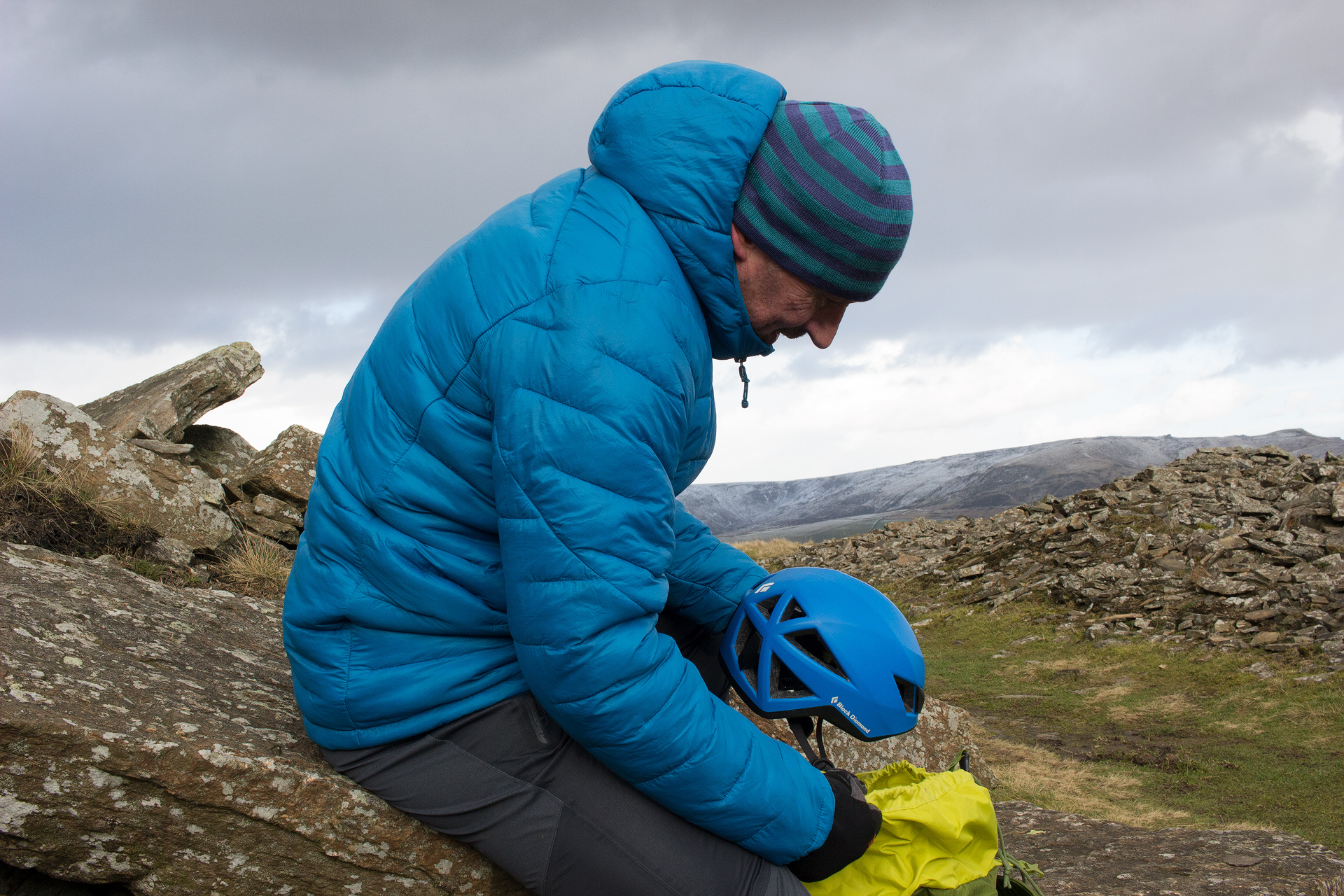 The end result weighs 421 grammes or so, in a men’s medium. It’s ‘regular’ cut is generous enough to fit over a sleek technical shell jacket, at least for us. The generous length gives more protection. A double-ended zip allows you to expose your, erm, tie-in loop for ease of belaying. And you get an insulated, adjustable hood that happily envelops a climbing helmet. It’s quite unlike more traditional, synthetic belay jackets in that the lightweight, recycled 10D Nylon fabric sacrifices ruggedness for weight reduction and we wouldn’t advise thrutching up sharp-edged chimneys or dragging it over the grit. It’s very much a layer-up once stopped, take off for active use sort of unit.
The end result weighs 421 grammes or so, in a men’s medium. It’s ‘regular’ cut is generous enough to fit over a sleek technical shell jacket, at least for us. The generous length gives more protection. A double-ended zip allows you to expose your, erm, tie-in loop for ease of belaying. And you get an insulated, adjustable hood that happily envelops a climbing helmet. It’s quite unlike more traditional, synthetic belay jackets in that the lightweight, recycled 10D Nylon fabric sacrifices ruggedness for weight reduction and we wouldn’t advise thrutching up sharp-edged chimneys or dragging it over the grit. It’s very much a layer-up once stopped, take off for active use sort of unit.
Tech stuff
Unlike some modern synthetics which are ‘blown’ into channels and produce jackets which look just like traditional down, PlumaFill is still sheeted, which in turn means Patagonia can use a clever minimal stitched construction to hold the insulation in place. That’s functionally significant because it both reduces cold spots where there’s no insulation and makes the jacket more wind resistant – stitched-through seams let high, cold winds knife through the fabric, which is one reason that micro-baffled down jackets are often less warm than you’d expect.
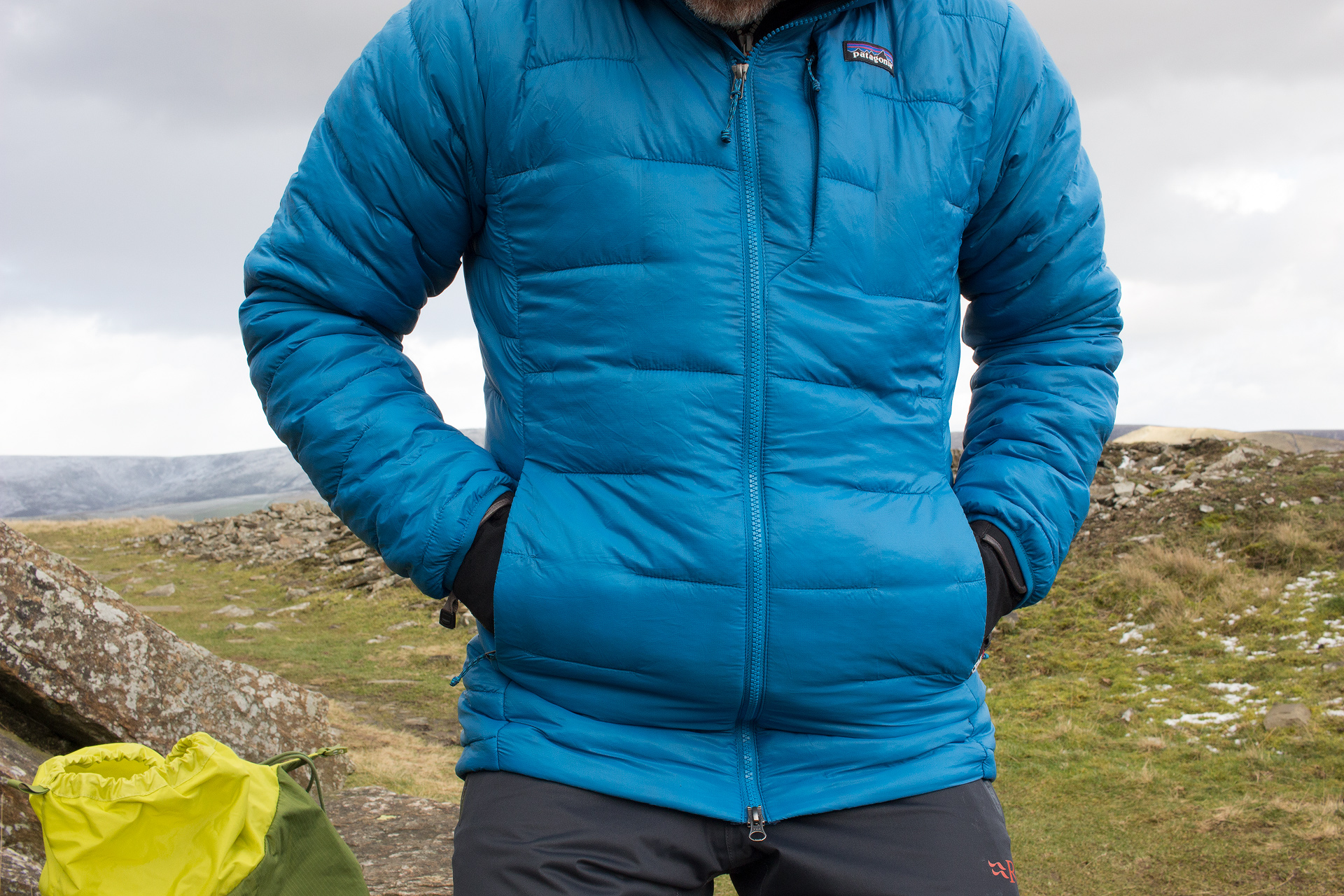 What makes it a bit different is that PlumaFill is claimed to mimic the properties of down in the sense of creating big loft from minimal material, but also to still perform when wet and, unlike some synthetics, to withstand repeated washing cycles. It took around ten years to develop and, says Patagonia, a lot of thinking and experimentation to come up with that partially-stitched construction.
What makes it a bit different is that PlumaFill is claimed to mimic the properties of down in the sense of creating big loft from minimal material, but also to still perform when wet and, unlike some synthetics, to withstand repeated washing cycles. It took around ten years to develop and, says Patagonia, a lot of thinking and experimentation to come up with that partially-stitched construction.
Performance and verdict
So what’s it like? Honestly, a bit like down in that it uses soft, lightweight fabrics, lofts fast and effectively even after being packed down and is very warm for its 420-odd gramme weight. Something like the Berghaus Ramche Extreme with its light fabrics, high-loft down and box-wall construction is warmer, but the Macro Puff is decently snug and at least on a par, if not warmer than most stitch-through down jackets of a comparable weight. It’s lighter and a fair bit warmer than something like a Rab Microlight Alpine for example – around 470 grammes.
It’s also been designed to work specifically as a over-layering or belay jacket, so it’s cut relatively generously and quite long too. I found it layered just fine over an insulated softshell or a trim-fitting hardshell, just pull it out it for stops or cold weather belays, stash it away when you start moving again. There are plenty of pockets – two hand-warmer ones, a phone-sized chest stash and twin drop-in warmer pockets that are ideal for gloves, hats, even a small water-bottle. If you are wearing a harness you’ll appreciate the double-ended zip for easy access to tie-in points and belay devices plus the helmet-friendly hood. One point on the latter is that the single cord-lock adjuster sits under the fabric. It’s easy enough to use with bare hands, but quite fiddly with thick to medium gloves when you can’t quite feel what’s going on.
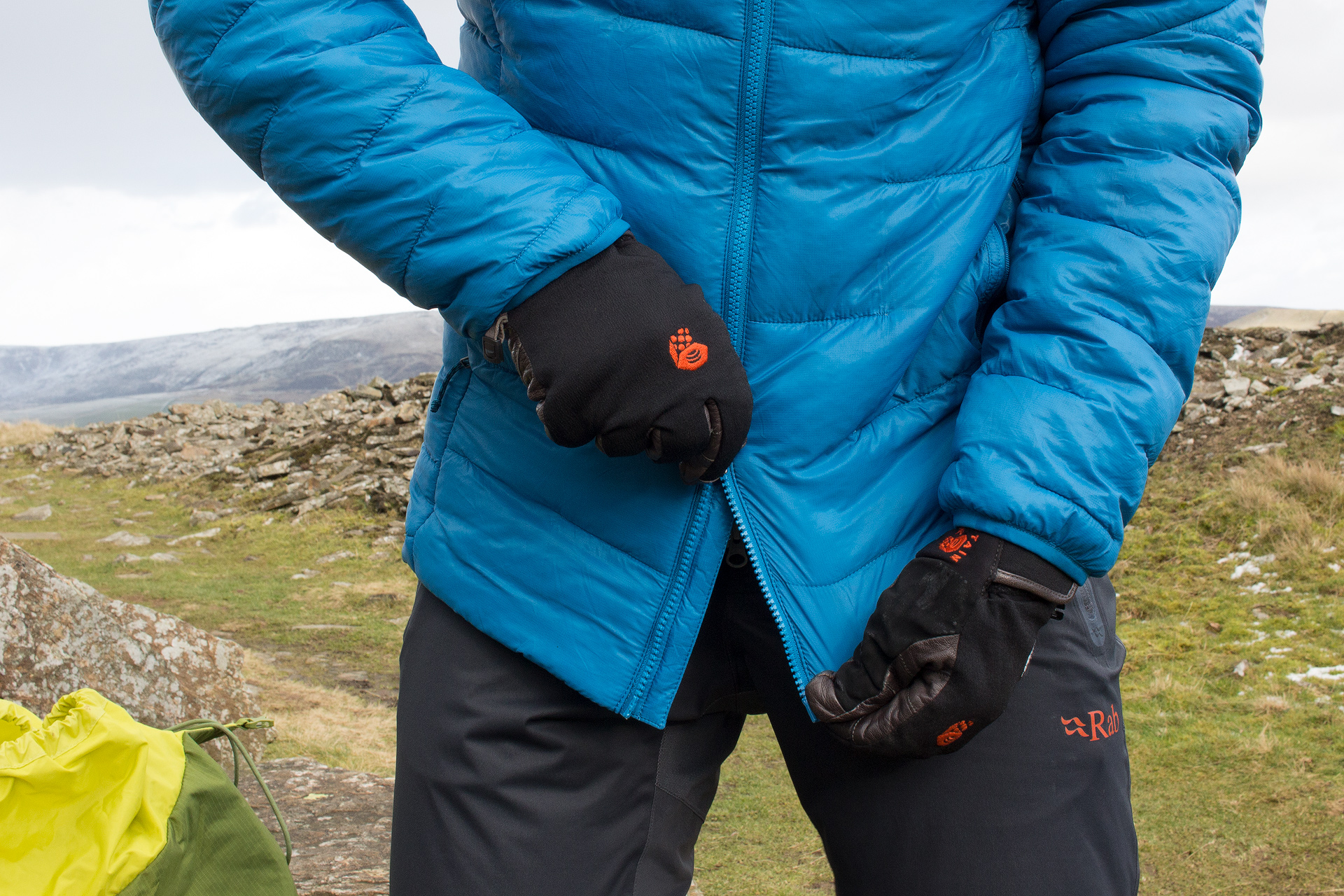 It’s by no means only for technical belay use though. I’ve found it a handy stash and deploy option for general mountain use, particularly in damp, cold UK conditions. Why? The Macro Puff’s Thermo Plume insulation is phenomenally good when wet. I soaked it properly on several occasions and found it retained pretty much all of its loft even when wet. It dries fast too, you can squeeze water out, but even left to its own devices, the water migrates downwards and drips out of the hem and cuffs and normal service is resumed.
It’s by no means only for technical belay use though. I’ve found it a handy stash and deploy option for general mountain use, particularly in damp, cold UK conditions. Why? The Macro Puff’s Thermo Plume insulation is phenomenally good when wet. I soaked it properly on several occasions and found it retained pretty much all of its loft even when wet. It dries fast too, you can squeeze water out, but even left to its own devices, the water migrates downwards and drips out of the hem and cuffs and normal service is resumed.
That gives it a real edge over down, even water-resistant down, jackets. There’s no fannying around worrying about it getting wet and losing loft. No nervousness about keeping it on when snow degenerates into horrible, soggy, wet driven slush. No qualms about packing it for a wet wild camping weekend. You can wash it easily too and it just comes back for more. Try that with untreated down. It’s not quite ‘knock-about’ robust because that fabric is light and slightly vulnerable to sharp, abrasive things in the way that ultra-lightweight fabrics inevitably are. You won’t want it to drag it roughly over rocky things unless you really have to, for example, but when it comes to wet stuff, it’s positively amphibian.
It also scores bonus points from that minimally-stitched construction, which increases the insulated area and improves wind-resistance by minimising seams. Probably why it felt subjectively warmer than a similar weight down jacket using midi-baffled stitch-through construction.
 Mostly it just works, but with a few provisos. That slightly over-sized, over-long cut is great for technical belay use, but less good if you want a jacket to simply chuck over a mid-layer for more general use when it looks a little Arsene Wenger winter coat-ish. You could potentially even go down a size if you want a sleeker fit. And then there’s the elephant in the room, that £380 full-on price-tag. It’s a bit of an unexpected blow to the proverbials, partly because we’ve come to expect synthetics to be cheaper than down and, for that price, you can buy some serious high-loft down insulation.
Mostly it just works, but with a few provisos. That slightly over-sized, over-long cut is great for technical belay use, but less good if you want a jacket to simply chuck over a mid-layer for more general use when it looks a little Arsene Wenger winter coat-ish. You could potentially even go down a size if you want a sleeker fit. And then there’s the elephant in the room, that £380 full-on price-tag. It’s a bit of an unexpected blow to the proverbials, partly because we’ve come to expect synthetics to be cheaper than down and, for that price, you can buy some serious high-loft down insulation.
Some of that is prejudice for sure and based purely on the unique combination of warmth to weight ratio and resistance to wetness, you can argue that it’s worth every penny of that RRP, but it’s undeniably steep.
Put that to one side though and the Macro Puff is pretty much the closest thing you’ll find to high-loft down that’ll also laugh in the face of a soaking wet winter’s day. And in the right circumstances, that might just be priceless.
More information:








